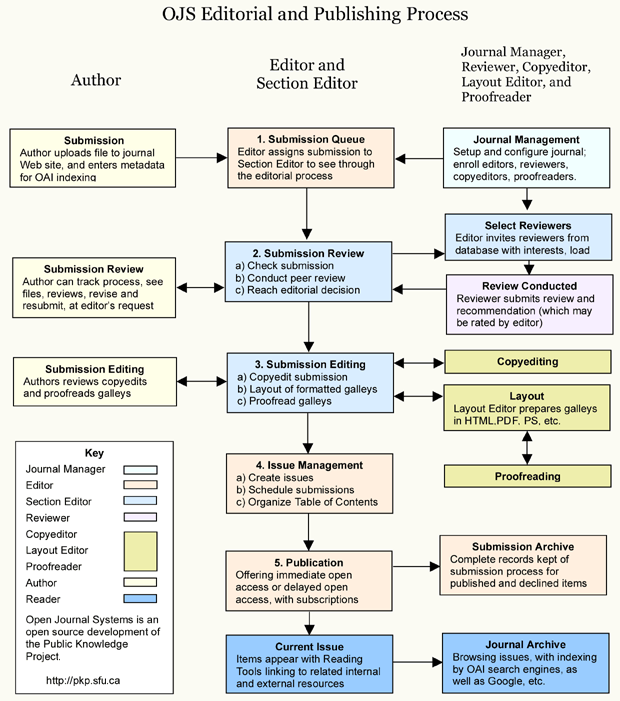Submissions
Submission Preparation Checklist
As part of the submission process, authors are required to check off their submission's compliance with all of the following items, and submissions may be returned to authors that do not adhere to these guidelines.- The submission has not been previously published, nor is it before another journal for consideration (or an explanation has been provided in Comments to the Editor).
- The submission file is in OpenOffice, Microsoft Word, RTF, or WordPerfect document file format.
- Where available, URLs for the references have been provided.
- The text is single-spaced; uses a 10-point font; employs italics, rather than underlining (except with URL addresses); and all illustrations, figures, and tables are placed within the text at the appropriate points, rather than at the end.
- The text adheres to the stylistic and bibliographic requirements outlined in the Author Guidelines, which is found in About the Journal.
- If submitting to a peer-reviewed section of the journal, the instructions in Ensuring a Blind Review have been followed.
Copyright Notice
The author who published his manuscript in JAKU (Jurnal Akuntansi & Keuangan Unja) (E-Journal) agrees to the following provisions:
- The copyright in each article belongs to the author, and the author acknowledges that JAKU has the right as the party that publishes for the first time with a Creative Commons Attribution 4.0 International License. This license permits anyone to copy and redistribute this material in any form or format, modify, modify, and make derivative works of this material for any purpose, including commercial purposes, so long as they credit the author of the original work.
- Authors can enter writings separately, arrange the non-exclusive distribution of manuscripts that have been published in this journal into other versions (for example: sent to the author's institutional repository, publication into books, etc.), by acknowledging that the manuscript has been first published. on JAKU (Jurnal Akuntansi & Keuangan Unja) (E-Journal).
- Every accepted manuscript must include a Copyright Transfer Agreement, before the article is published. The copyright transfer agreement form can be downloaded here.
Authors/Readers/Third Parties can copy and redistribute the material in any medium or format, as well as remix, transform, and build upon the material for any purpose, even commercially, but they must give appropriate credit (the name of the creator and attribution parties (authors detail information), a license & copyright, an open access policy, a disclaimer notice, and a link to the material), provide a link to the license, and indicate if changes were made (Publisher indicates the modification of the material (if any) and retain an indication of previous modifications using a CrossMark Policy and information about Erratum-Corrigendum notification).
Authors/Readers/Third Parties can read, print and download, redistribute or republish the article (e.g. display in a repository), translate the article, download for text and data mining purposes, reuse portions or extracts from the article in other works, sell or re-use for commercial purposes, remix, transform, or build upon the material, they must distribute their contributions under the same license as the original Creative Commons Attribution-ShareAlike (CC BY-SA).

JAKU (Jurnal Akuntansi & Keuangan Unja) (E-Journal) is licensed under a Creative Commons Attribution-NonCommercial-ShareAlike 4.0 International License.
Privacy Statement
The names and email addresses entered in this journal site will be used exclusively for the stated purposes of this journal and will not be made available for any other purpose or to any other party.


















